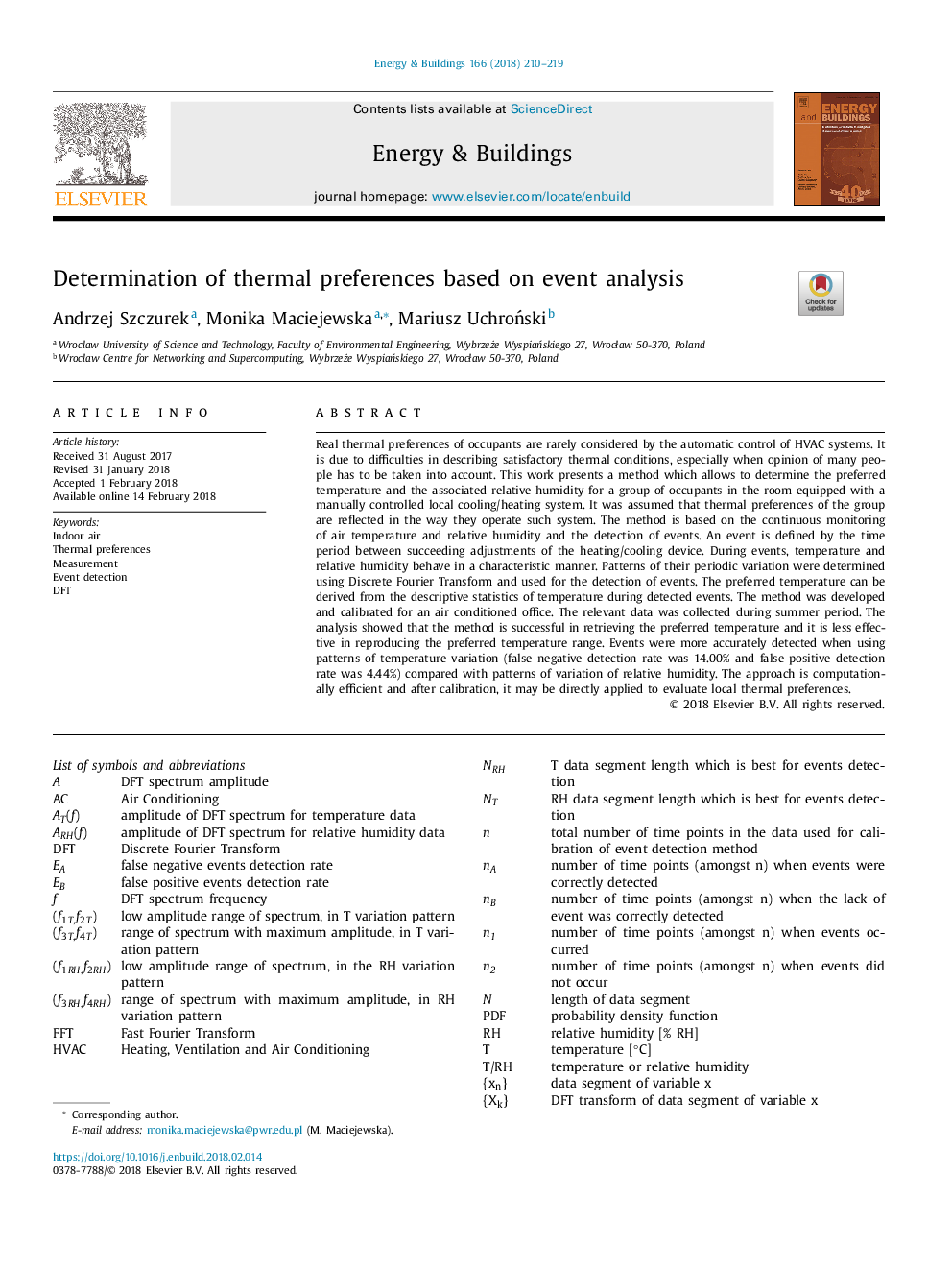| Article ID | Journal | Published Year | Pages | File Type |
|---|---|---|---|---|
| 6728481 | Energy and Buildings | 2018 | 10 Pages |
Abstract
Real thermal preferences of occupants are rarely considered by the automatic control of HVAC systems. It is due to difficulties in describing satisfactory thermal conditions, especially when opinion of many people has to be taken into account. This work presents a method which allows to determine the preferred temperature and the associated relative humidity for a group of occupants in the room equipped with a manually controlled local cooling/heating system. It was assumed that thermal preferences of the group are reflected in the way they operate such system. The method is based on the continuous monitoring of air temperature and relative humidity and the detection of events. An event is defined by the time period between succeeding adjustments of the heating/cooling device. During events, temperature and relative humidity behave in a characteristic manner. Patterns of their periodic variation were determined using Discrete Fourier Transform and used for the detection of events. The preferred temperature can be derived from the descriptive statistics of temperature during detected events. The method was developed and calibrated for an air conditioned office. The relevant data was collected during summer period. The analysis showed that the method is successful in retrieving the preferred temperature and it is less effective in reproducing the preferred temperature range. Events were more accurately detected when using patterns of temperature variation (false negative detection rate was 14.00% and false positive detection rate was 4.44%) compared with patterns of variation of relative humidity. The approach is computationally efficient and after calibration, it may be directly applied to evaluate local thermal preferences.
Related Topics
Physical Sciences and Engineering
Energy
Renewable Energy, Sustainability and the Environment
Authors
Andrzej Szczurek, Monika Maciejewska, Mariusz UchroÅski,
